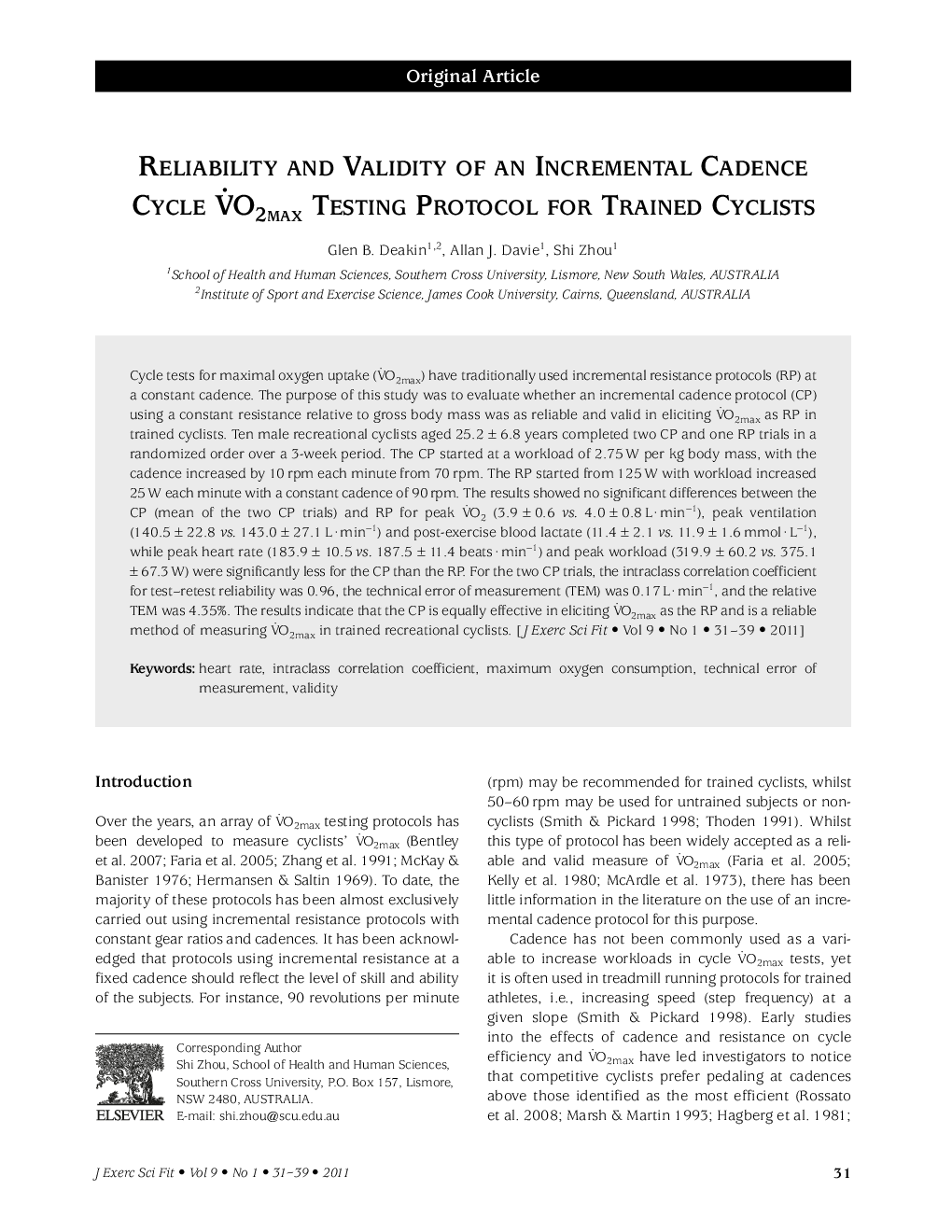| Article ID | Journal | Published Year | Pages | File Type |
|---|---|---|---|---|
| 2739694 | Journal of Exercise Science & Fitness | 2011 | 9 Pages |
Cycle tests for maximal oxygen uptake (O2max) have traditionally used incremental resistance protocols (RP) at a constant cadence. The purpose of this study was to evaluate whether an incremental cadence protocol (CP) using a constant resistance relative to gross body mass was as reliable and valid in eliciting O2max as RP in trained cyclists. Ten male recreational cyclists aged 25.2 ± 6.8 years completed two CP and one RP trials in a randomized order over a 3-week period. The CP started at a workload of 2.75 W per kg body mass, with the cadence increased by 10 rpm each minute from 70 rpm. The RP started from 125 W with workload increased 25W each minute with a constant cadence of 90 rpm. The results showed no significant differences between the CP (mean of the two CP trials) and RP for peak O2 (3.9 ± 0.6 vs. 4.0 ± 0.8 L·min−1), peak ventilation (140.5 ± 22.8 vs. 143.0 ± 27.1 L·min−1) and post-exercise blood lactate (11.4 ± 2.1 vs. 11.9 ± 1.6 mmol·L−1), while peak heart rate (183.9 ± 10.5 vs. 187.5 ± 11.4 beats·min−1) and peak workload (319.9 ± 60.2 vs. 375.1 ± 67.3W) were significantly less for the CP than the RP. For the two CP trials, the intraclass correlation coefficient for test-retest reliability was 0.96, the technical error of measurement (TEM) was 0.17 L·min−1, and the relative TEM was 4.35%. The results indicate that the CP is equally effective in eliciting O2max as the RP and is a reliable method of measuring O2max in trained recreational cyclists.
